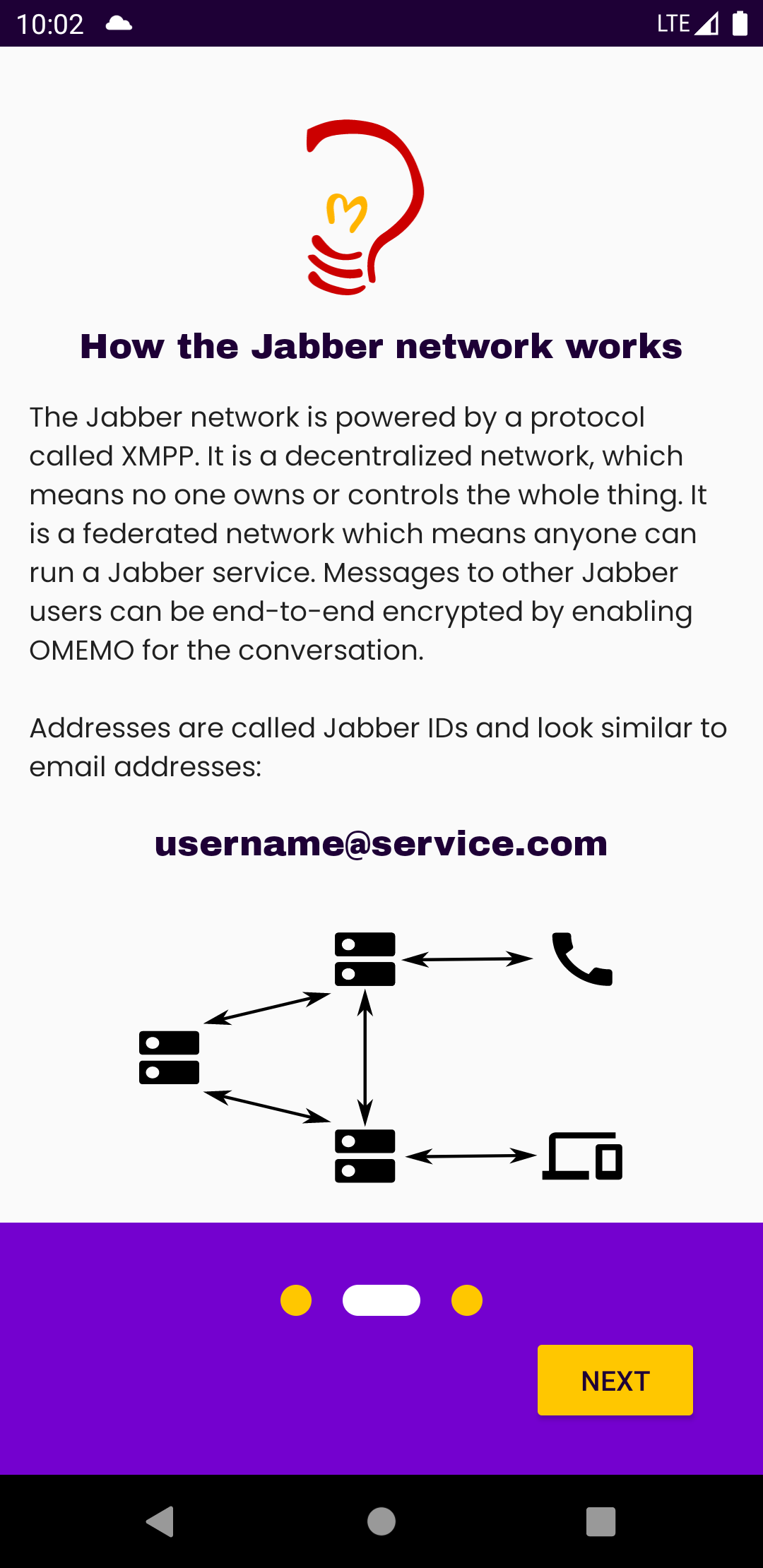
Newsletter: eSIM Adapter (and Google Play Fun)
singpolyma@singpolyma.net
Hi everyone!
Welcome to the latest edition of your pseudo-monthly JMP update!
In case it’s been a while since you checked out JMP, here’s a refresher: JMP lets you send and receive text and picture messages (and calls) through a real phone number right from your computer, tablet, phone, or anything else that has a Jabber client. Among other things, JMP has these features: Your phone number on every device; Multiple phone numbers, one app; Free as in Freedom; Share one number with multiple people.
eSIM Adapter
This month we’re pleased to announce the existence of the JMP eSIM Adapter. This is a device that acts exactly like a SIM card and will work in any device that accepts a SIM card (phone, tablet, hotspot, Rocket Stick), but the credentials it offers come from eSIMs provided by the user. With the adapter, you can use eSIMs from any provider in any device, regardless of whether the device or OS support eSIM. It also means you can move all your eSIMs between devices easily and conveniently. It’s the best of both worlds: the convenience of downloading eSIMs along with the flexibility of moving them between devices and using them on any device.
So how are eSIMs downloaded and written to the device in order to use them? The easiest and most convenient way will be the official Android app, which will of course be freedomware and available in F-droid soon. The app is developed by PeterCxy of OpenEUICC fame. If you have an OS that bundles OpenEUICC, it will also work for writing eSIMs to the adapter. The app is not required to use the adapter, and swapping the adapter into another device will work fine. What if you want to switch eSIMs without putting the card back into an Android device? No problem; as long as your other device supports the standard SIM Toolkit menus, you will be able to switch eSIMs on the fly.
What if you don’t have an Android device at all? No problem, there are a few other options for writing eSIMs to the adapter. You can get a PC/SC reader device (about $20 on Amazon for example) and then use a tool such as lpac to download and write eSIMs to the adapter from your PC. Some other cell modems may also be supported by lpac directly. Finally, there is work in progress on an optional tool that will be able to use a server (optionally self-hosted) to facilitate downloading eSIMs with just the SIM Toolkit menus.
There is a very limited supply of these devices available for testing now, so if you’re interested, or just have questions, swing by the chatroom (below) and let us know. We expect full retail roll-out to happen in Q2.
Cheogram Android
Cheogram Android saw a major new release this month, 2.13.4-1 includes a visual refresh, many fixes, and some features including:
- Allow locally muting channel participants
- Allow setting subject on messages and threads
- Display list of recent threads in channel details
- Support full channel configuration form for owners
- Register with channel when joining, deregister when leaving (where supported)
- Expert setting to choose voice message codec
Is My Contact List Uploaded?
Cheogram Android has always included optional features for integrating with your local Android contacts (if you give permission). If you add a Jabber ID to an Android contact, their name and image are displayed in the app. Additionally, if you use a PSTN gateway (such as cheogram.com, which JMP acts as a plugin for) all your contacts with phone numbers are displayed in the app, making it easy to message or call them via the gateway. This is all done locally and no information is uploaded anywhere as part of this feature.
Unfortunately, Google does not believe us. From speaking with developers of similar apps, it seems Google no longer believe anyone who has access to the device contacts is not uploading them somewhere. So, starting with this release, Cheogram Android from the Play Store says when asking for contact permission that contacts are uploaded. Not because they are, but because Google requires that we say so. The app’s privacy policy also says contacts are uploaded; again, only because Google requires that it say this without regard for whether it is true.
Can any of your contacts be exposed to your server? Of course. If you choose to send a message or make a call, part of the message or call’s metadata will transit your server, so the server could become aware of that one contact. Similarly, if you view the contact’s details, the server may be asked whether it knows anything about this contact. And finally, if you tap the “Add Contact” button in the app to save this contact to your server-side list, that one contact is saved server-side. Unfortunately, spelling out all these different cases did not appease Google, who insisted we must say that we “upload the contact list to the server” in exactly those words. So, those words now appear.
Thanks for Reading
The team is growing! This month we welcome SavagePeanut to the team to help out with development.
To learn what’s happening with JMP between newsletters, here are some ways you can find out:
- The chatroom remains the heart of the community. You can also join from your web browser or from Matrix.
- The blog, where you may be reading this. Can also be followed in a client like Movim.
- The Lemmy Community
- The Subreddit
- On ATprotocol
- On Twitter
Thanks for reading and have a wonderful rest of your week!
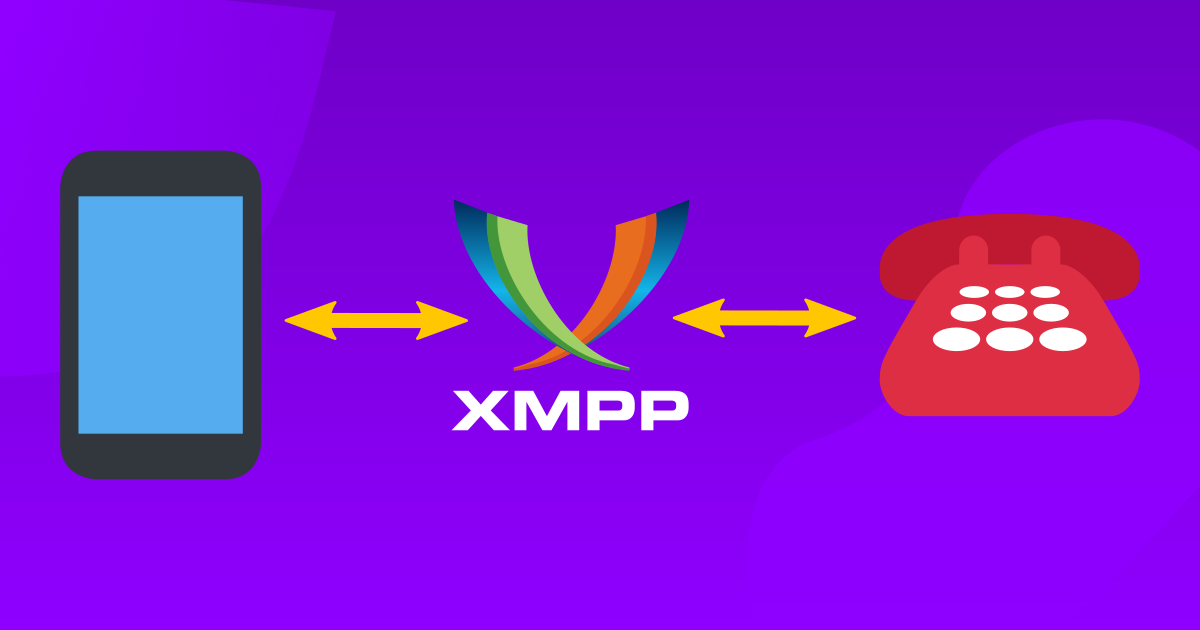
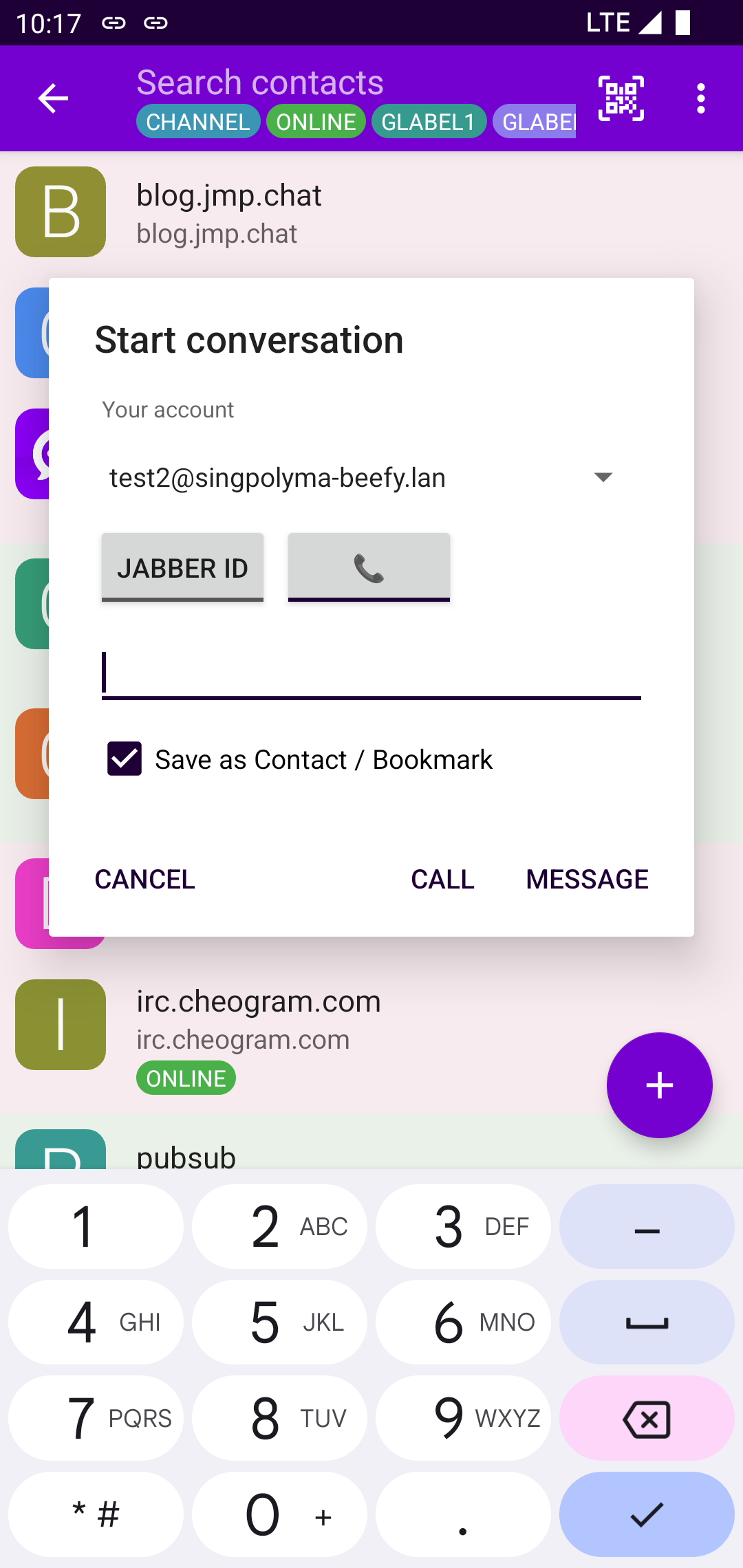
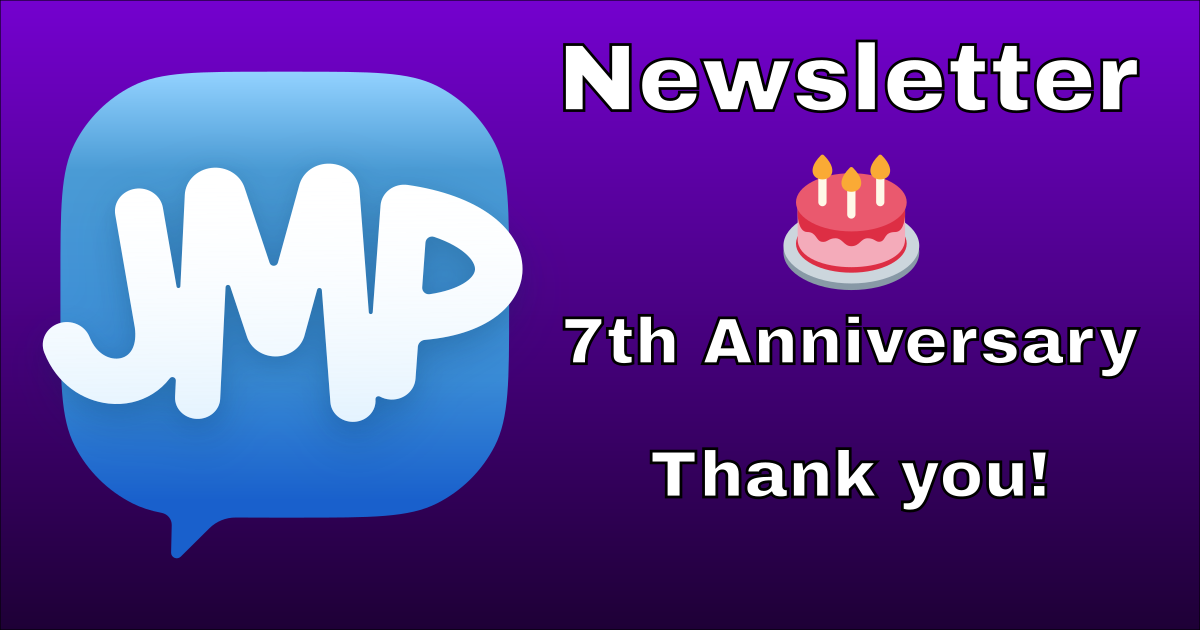


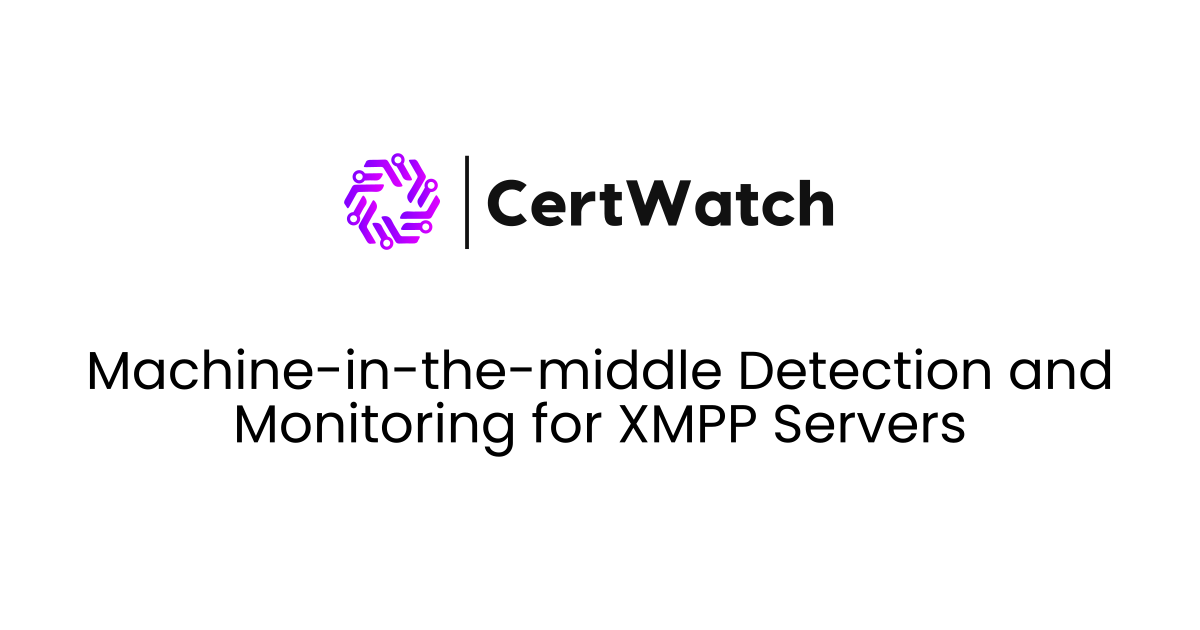



 Jabber-side reactions are now translated where possible into the tapback pseudo-syntax recognized by many Android and iMessage users so that your reactions will appear in a native way to those users. In Cheogram Android you can swipe to reply to a message and enter a single emoji as the reply to send a reaction/tapback.
Jabber-side reactions are now translated where possible into the tapback pseudo-syntax recognized by many Android and iMessage users so that your reactions will appear in a native way to those users. In Cheogram Android you can swipe to reply to a message and enter a single emoji as the reply to send a reaction/tapback.
